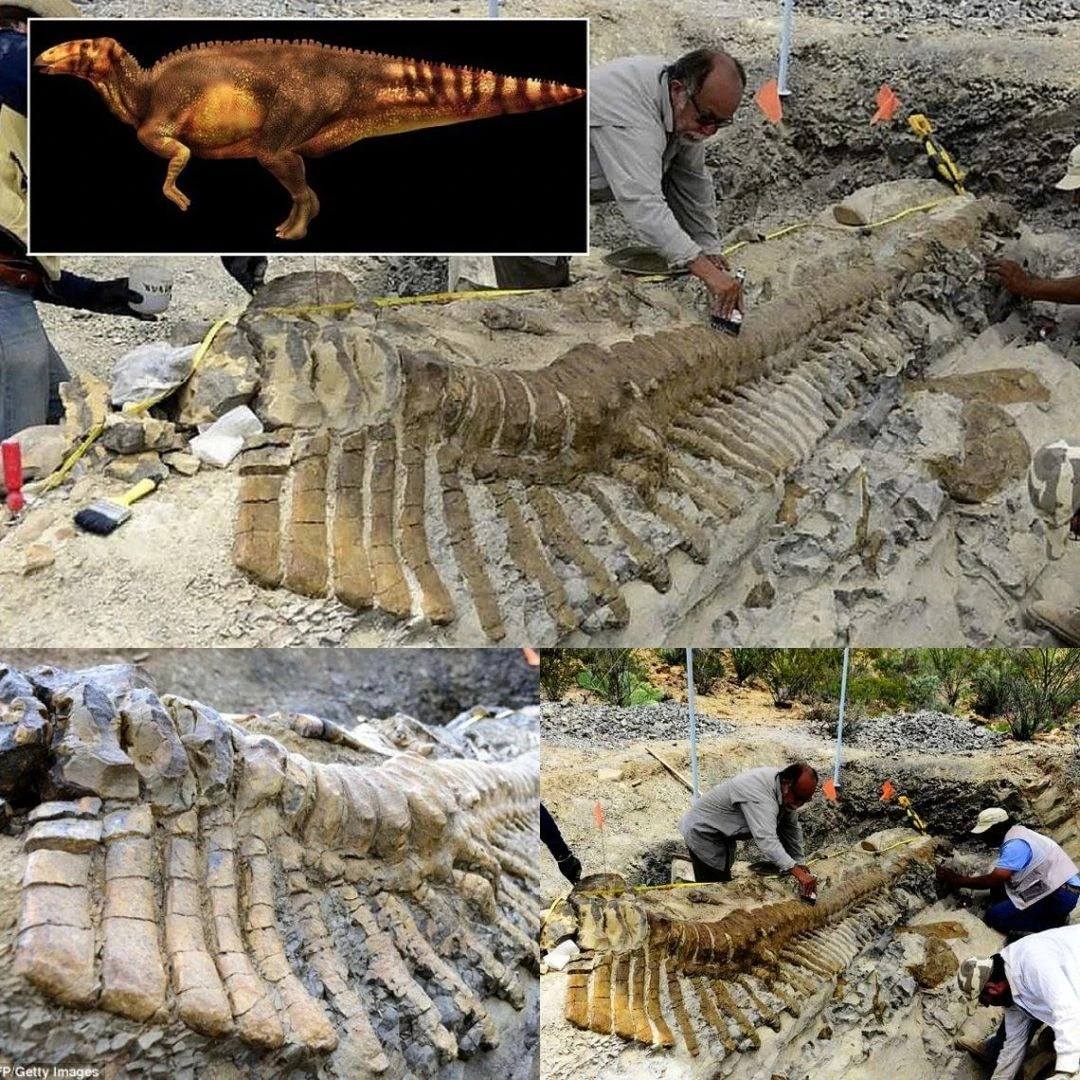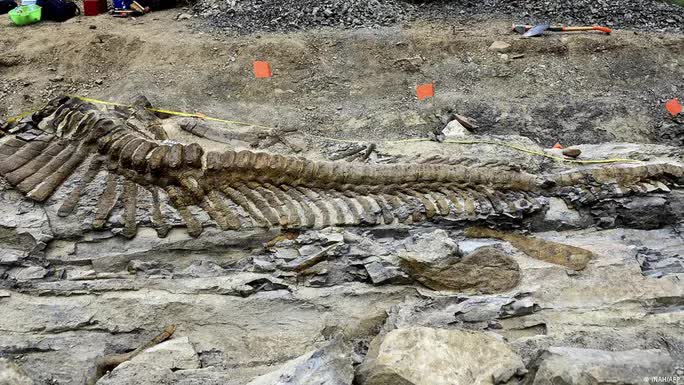Ancient Tail of Time: Mexico’s 72-Million-Year-Old Dinosaur Discovery

In the arid deserts of Mexico, beneath layers of sand and stone, archaeologists have uncovered a breathtaking treasure: a 72-million-year-old dinosaur tail. This astonishingly well-preserved fossil offers a rare and extraordinary glimpse into prehistoric life, where colossal creatures once roamed the Earth. More than just a fossilized bone structure, the discovery is a bridge across time—connecting the present with an age when dinosaurs dominated the planet’s landscapes.

A Rare Window Into the Past
Finding any complete fossil is rare, but discovering an intact dinosaur tail is even more exceptional. The tail, preserved with remarkable detail, provides scientists with an unprecedented opportunity to study the anatomy, movement, and even possible behavior of these ancient giants. Each vertebra, perfectly aligned, speaks of a creature that once thundered across Mexico’s prehistoric floodplains and deserts.
How such a delicate structure managed to survive intact for over 70 million years is still a mystery. Experts suggest it may have been buried quickly by sediment following a sudden natural event, such as a flood or landslide. The rapid covering would have shielded the bones from scavengers and erosion, allowing nature’s preservation process to take hold.

Insights Into Dinosaur Evolution
The fossilized tail is more than a scientific curiosity—it is a key to understanding dinosaur evolution in North America. The desert region of Mexico, now dry and unforgiving, was once a lush habitat teeming with life. Dinosaurs thrived here, and the discovery of this tail adds crucial data to the fossil record, helping paleontologists reconstruct migration patterns, feeding behaviors, and species diversity.
Additionally, the tail may hold secrets about the creature’s musculature and movement. By analyzing the vertebrae, researchers can estimate how the dinosaur balanced, walked, or even defended itself. For some species, tails acted as counterbalances; for others, they served as weapons or displays. This fossil could help clarify such evolutionary adaptations.
A Bridge Across Time

Beyond its scientific significance, the discovery resonates on a deeper, almost poetic level. To see the bones of a creature that lived 72 million years ago is to touch the edge of eternity. It reminds us that Earth’s history is vast, layered with countless worlds that rose and fell long before humanity appeared. The fossilized tail stands as a testament to survival, chance, and the mysterious forces of preservation that allow us to glimpse a forgotten past.
Conclusion
The 72-million-year-old dinosaur tail unearthed in Mexico is not just a fossil—it is a story preserved in stone. It tells of an ancient world, of creatures both majestic and powerful, and of natural processes that defy easy explanation. As paleontologists continue to study this remarkable find, we are reminded that the Earth still holds secrets waiting to be uncovered. Each discovery rekindles our wonder, showing us that the story of life is far richer, stranger, and more awe-inspiring than we can imagine.











